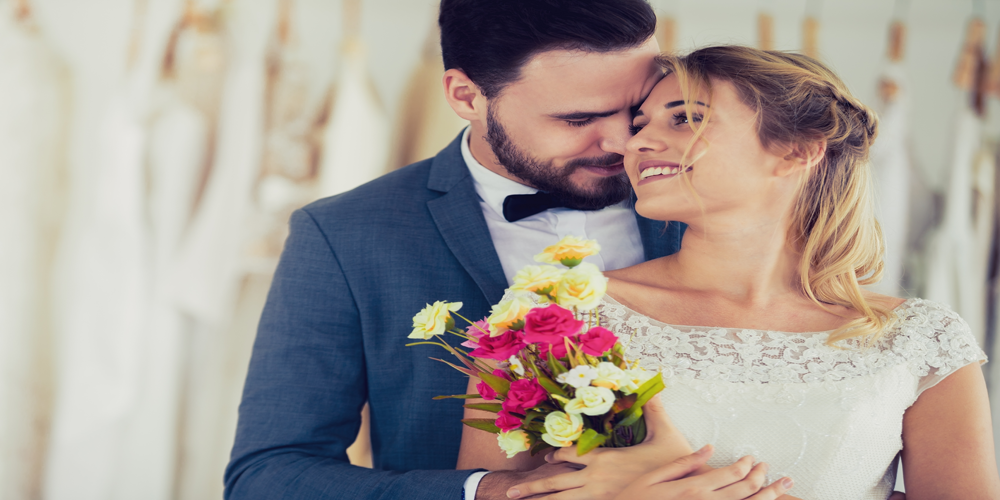Guide to Bride and Groom Wear: Trends, Traditions, and Tips
Weddings are a celebration of love, a fusion of two lives, and a momentous occasion that is cherished forever. Among the many elements that make a wedding special, the attire of the bride and groom stands out as one of the most significant. The right wedding attire not only enhances the beauty of the couple but also sets the tone for the entire event. This comprehensive guide delves into the world of bride and groom wear, exploring trends, traditions, and tips to help you make the best choices for your big day.
1. Bridal Wear: Styles and Traditions
Traditional Bridal Attire
Western Weddings
In Western cultures, the bridal gown is often a white or ivory dress, symbolizing purity and new beginnings. The tradition of the white wedding dress dates back to Queen Victoria, who popularized it in the 19th century. Modern brides have a plethora of styles to choose from, including:
- Ball Gown: Featuring a fitted bodice and a full, flowing skirt, this classic silhouette is perfect for formal weddings.
- A-Line: This universally flattering style gradually flares out from the waist, resembling the shape of an “A”.
- Mermaid: Known for its fitted bodice and flared skirt, the mermaid dress accentuates curves and adds a touch of drama.
- Sheath: This minimalist style follows the body’s natural lines, offering a sleek and modern look.
Eastern Weddings
Bridal attire in Eastern cultures varies widely, with each region boasting its unique traditions:
- Indian Brides: Traditionally wear richly embroidered saris or lehengas in vibrant colors like red, symbolizing prosperity and fertility. Intricate jewelry and henna designs complete the look.
- Chinese Brides: Often don the qipao or cheongsam, a form-fitting dress usually in red, symbolizing luck and happiness. Gold jewelry and ornate headpieces are common accessories.
- Japanese Brides: Typically wear a white kimono for the ceremony, followed by a colorful, embroidered kimono for the reception.
Modern Bridal Trends
Eco-Friendly Gowns
With sustainability becoming increasingly important, many brides are opting for eco-friendly wedding dresses made from organic or recycled materials. Designers are also creating gowns that can be repurposed or worn again, reducing waste.
Minimalist Dresses
Inspired by the less-is-more philosophy, minimalist bridal gowns feature clean lines, simple silhouettes, and understated elegance. These dresses often forgo heavy embellishments in favor of high-quality fabrics and impeccable tailoring.
Non-Traditional Colors
While white remains popular, more brides are exploring non-traditional colors such as blush, champagne, and even bold hues like blue or black. These unique choices allow brides to express their individuality and personal style.
2. Groom Wear: Classic Elegance & Modern Flair
Traditional Groom Attire
Western Weddings
In Western cultures, the groom’s attire is typically a suit or tuxedo. The choice between the two often depends on the formality of the wedding:
- Tuxedo: Ideal for black-tie weddings, tuxedos feature satin lapels and are often worn with a bow tie and cummerbund or waistcoat.
- Suit: More versatile than a tuxedo, a well-tailored suit can be dressed up or down depending on the occasion. Suits come in various styles, including single-breasted, double-breasted, and three-piece.
Eastern Weddings
Groom attire in Eastern cultures is as diverse as that of the bride:
- Indian Grooms: Commonly wear a sherwani or achkan, long coats adorned with intricate embroidery, paired with churidar pants. Turbans and ornate jewelry add to the regal look.
- Chinese Grooms: Often opt for a traditional changshan, a long tunic worn over trousers, sometimes accompanied by a dragon robe for a grander look.
- Japanese Grooms: Typically wear a black kimono with a white undergarment, known as montsuki, paired with hakama pants.
Modern Groom Trends
Mix and Match
Modern grooms are increasingly breaking away from the traditional matching suit and are instead opting for mix-and-match ensembles. This approach allows for more personalization and creativity, combining different colors, patterns, and textures.
Bold Colors and Patterns
While classic black and navy suits remain popular, bold colors like burgundy, emerald, and even pastels are making their way into wedding fashion. Patterns such as checks, stripes, and florals add an extra layer of style and personality.
Casual Chic
For less formal weddings, grooms are embracing a more relaxed, yet still stylish, look. Think tailored blazers paired with chinos, or even a well-fitted shirt and trousers for a beach or outdoor wedding.
3. Coordinating Bridal & Groom Attire
Color Coordination
One of the key aspects of coordinating bridal and groom attire is color. While it’s not necessary for the bride and groom to match perfectly, complementary colors can create a harmonious look. Consider the following tips:
- Use a Color Palette: Select a color palette that includes shades both of you like. This palette can guide your choices for attire, accessories, and even the wedding decor.
- Accent Colors: Use accent colors to tie your looks together. For example, the groom’s tie or pocket square can match the bride’s bouquet or shoes.
- Contrast and Complement: If the bride’s dress is a non-traditional color, choose a suit color that contrasts well without clashing. For example, a deep navy suit can beautifully complement a blush gown.
Style Coordination
Beyond color, consider how your styles will work together:
- Formality: Ensure both outfits match the formality of the event. A formal ball gown pairs well with a tuxedo, while a casual dress might look better with a suit or even a more relaxed ensemble.
- Era or Theme: If your wedding has a specific theme or vintage vibe, coordinate your outfits to reflect that. A 1920s-themed wedding, for instance, might inspire a flapper-style dress and a classic tuxedo with a bow tie.
- Cultural Elements: If you’re incorporating cultural attire, find ways to complement each other’s traditional looks. This could mean matching embroidery patterns, coordinating accessories, or even blending styles.
4. Accessories & Final Touches
Bridal Accessories
Veils and Headpieces
- Veils: From cathedral-length to birdcage, veils add a touch of tradition and elegance. Choose a veil that complements your dress style and venue.
- Headpieces: Tiaras, flower crowns, and hair combs can add sparkle and personality. Select a piece that aligns with your overall look.
Jewelry
- Earrings and Necklaces: Choose pieces that enhance your dress without overpowering it. Delicate studs or statement earrings can both be appropriate depending on your style.
- Bracelets and Rings: While the engagement ring takes center stage, a subtle bracelet or additional ring can complete your look.
Groom Accessories
Ties and Pocket Squares
- Ties: Bow ties, neckties, and even bolo ties offer various looks. Coordinate the tie with the wedding’s color scheme and level of formality.
- Pocket Squares: This small accessory can add a pop of color or pattern, tying in with the bride’s bouquet or the overall theme.
Cufflinks and Watches
- Cufflinks: A classic accessory, cufflinks can be simple or personalized with initials, dates, or meaningful symbols.
- Watches: A stylish watch not only serves a practical purpose but also adds a touch of sophistication to the groom’s outfit.
Footwear
- Brides: Choose comfortable yet elegant shoes. Consider the venue when selecting heel height and style. Flats, sandals, and traditional heels all have their place.
- Grooms: Classic dress shoes, whether oxfords, loafers, or brogues, should complement the suit or tuxedo. Ensure they are polished and comfortable for a long day.
5. Tips for Choosing Wedding Attire
Start Early
Begin your search for wedding attire at least six to nine months before the wedding. This allows ample time for fittings, alterations, and any necessary changes.
Set a Budget
Determine your budget early on and stick to it. Remember to account for accessories, shoes, and any additional costs like tailoring or dry cleaning.
Comfort is Key
While style is important, comfort should not be overlooked. Ensure your attire allows you to move, dance, and enjoy your day without discomfort.
Trust the Professionals
Consult with bridal consultants and tailors who can offer expert advice and help you find the perfect fit. Their experience and knowledge can be invaluable.
Consider the Venue and Season
Your wedding venue and the season will influence your attire choices. Lightweight fabrics and shorter styles are ideal for summer weddings, while heavier fabrics and longer sleeves are better suited for winter.
Personal Touches
Incorporate personal touches that reflect your personality and story as a couple. This could be a custom embroidery, a family heirloom, or even a special message sewn into the attire.
Choosing the Perfect Wedding Attire
Choosing the perfect wedding attire for both the bride and groom is a journey that blends tradition, style, and personal expression. By understanding the various options available and considering practical tips, you can ensure that your wedding day look is not only beautiful but also uniquely yours. Whether you opt for classic elegance or modern flair, the most important thing is that your attire makes you feel confident and ready to celebrate the beginning of your new life together.



